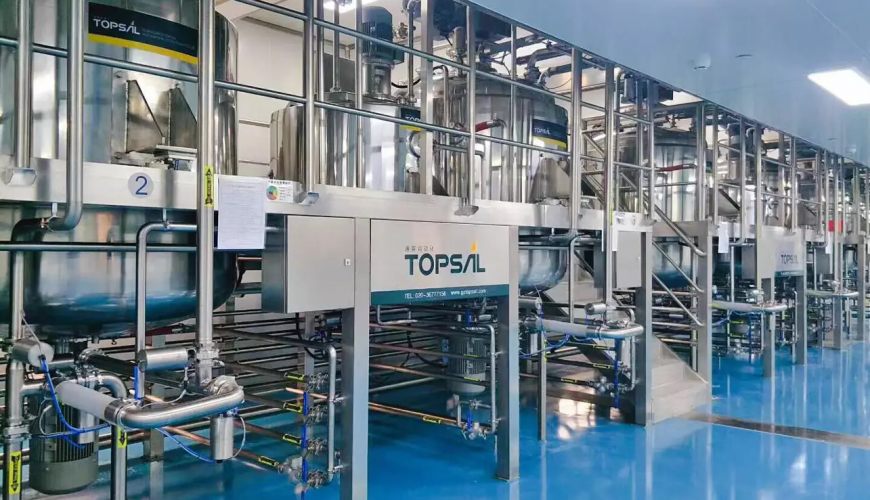Will the emulsification temperature of the vacuum homogenizing emulsifier affect the product quality during the emulsification product production process? The answer is yes.

TopSail vacuum homogenizing emulsification machine
When oil and water are liquid at the same time, the emulsification effect can be achieved by stirring at room temperature. It can be seen that there is no strict limit on temperature in the emulsification process. Generally speaking, the emulsification temperature is determined by such factors as the melting point of the high melting point substances contained in the two phases, the type of emulsifier, and the solubility of oil and water phases. However, we cannot ignore that the emulsification temperature has a great influence on the emulsification results.
The temperature of the two phases should be kept to nearly the same state, especially for wax and fat phase components with high melting point, i.e. temperature above 70 ℃, when they are emulsified, the low temperature water phase should not be added to prevent wax and fat crystals from separating out before emulsification, resulting in block or rough uneven emulsion.
Generally speaking, the temperature of oil and water can be controlled between 75 ℃ and 85 ℃ during emulsification. If the oil phase contains wax with high melting point, the emulsification temperature will be higher. In addition, if the viscosity increases during the emulsification process, it will also affect the mixing, so it is necessary to appropriately increase the emulsification temperature. If the emulsifier used has a certain phase inversion temperature, the emulsification temperature of the laboratory vacuum emulsifier is also about the phase inversion temperature.
Emulsion temperature also affects the particle size of emulsion sometimes. For example, when the fatty acid soap anionic emulsifier is generally used and the primary soap method is used for emulsification, when the emulsification temperature is controlled at 80 ℃, the particle size of emulsion is about 1.8-2.0 μ m. If emulsification is carried out at 60 ℃, the particle size is about 6 μ m。 However, when using nonionic emulsifier for emulsification, the influence of emulsification temperature on particle size will be relatively weak.
In the market, similar products are highly competitive. It is necessary to pay attention to production details if you want to distance yourself from peers, so that you can go further.
 中文站
中文站 En
En






